Poles are the main element of power lines. The performance and functionality of power transmission lines, as well as the safety of their operation, largely depend on their quality and the quality of their installation. Thus, the installation of power transmission towers plays a huge role in ensuring uninterrupted power supply to consumers.
The installation of power transmission towers requires preliminary design work. The design should be carried out taking into account the types of supports, types of soil, terrain features and many other factors. Design work are of great importance for the quality of installation and reducing the level of costs for installation work. One of the important design stages is the calculation of the parameters of the foundation on which the installation of power transmission towers will be carried out.
The installation of power transmission towers is a rather complicated technological operation. A necessary condition for its implementation is the availability of specialized equipment for performing work related to the lifting and movement of goods, installation and high-altitude work. The level of technical equipment of the company that installs power transmission towers should ensure high accuracy of installation. The most common type of equipment for the installation of power transmission towers is lifting and drilling mechanisms. The working stroke and outreach of the crane boom must ensure the possibility of full lifting and holding the support in a vertical position until it is fixed to the foundation. Before fixing the supports, their position must be carefully aligned vertically, the adjustment of the position of the supports is ensured using additional equipment. In addition, high-quality installation of power transmission towers is impossible without an appropriate level of qualification of the personnel involved in the installation work.
SV supports
Reinforced concrete supports VL necessary to fix the lines on them electrical wires. They hold the wires attached to them at the right distance from the ground. The wires themselves are fixed on supports through insulators to traverses and special consoles. Reinforced concrete has a number of advantages over other materials used for the manufacture of supports, such as wood or metal. Reinforced concrete is very resistant to negative impact environment, does not corrode, chemical substances. If the line load is from 35 kV or more, then centrifuged concrete is used. It is possible to operate reinforced concrete pylons of power transmission lines CV for more than fifty years.
Insulator used for fastening and insulating suspended cables on the supports of power transmission lines. Insulators and other devices for fixing wires are installed on the traverse. In order to install lamps on the pole that will illuminate the street, a bracket is installed on the very top of the pole. This allows you to mount one or more spotlights.
These designs are marked with letters and numbers.
For example, CB 110 - 3.5 It is deciphered as follows: the stand is vibrated, its length is 11 m, and the calculated moment (maximum) is 3.5. Reinforced concrete light poles are most often installed with the letter A.
Depending on the method of suspension of wires, the supports are divided into two main groups:
- intermediate supports, on which the wires are fixed in supporting clamps;
- anchor-type supports for tensioning wires; on these supports, the wires are fixed in tension clamps.
These types of supports are divided into types that have a special purpose.
- Intermediate straight supports are installed on straight sections of the line. On intermediate supports with suspension insulators, the wires are fixed in supporting garlands hanging vertically; on supports with pin insulators, the wires are fastened by wire knitting. In both cases, intermediate supports perceive horizontal loads from wind pressure on the wires and on the support, and vertical - from the weight of wires, insulators and the own weight of the support.
- Intermediate corner supports are installed at the corners of the line with wires suspended in supporting garlands. In addition to the loads acting on the intermediate straight supports, the intermediate and anchor-angle supports also perceive loads from the transverse components of the tension of the wires and cables. At angles of rotation of the power line of more than 20 °, the weight of the intermediate corner supports increases significantly. At large angles of rotation, anchor-angle supports are installed.
When installing anchor supports on straight sections of the route and hanging wires on both sides of the support with the same tensions, the horizontal longitudinal loads from the wires are balanced and the anchor support works in the same way as the intermediate one, that is, it perceives only horizontal transverse and vertical loads. If necessary, the wires on one and the other side of the support can be pulled with different tension of the wires. In this case, in addition to horizontal transverse and vertical loads, the horizontal longitudinal load will act on the support.
When installing anchor supports at the corners of the anchor-angle supports, they also perceive the load from the transverse components of the tension of the wires and cables.
End supports are installed at the ends of the line. From these supports depart wires suspended on the portals of substations.
By appointment
intermediate supports are installed on straight sections of the overhead line route, are intended only for supporting wires and cables and are not designed for loads from the tension of wires along the line. Usually they make up 80-90% of all overhead lines.
Angle supports are installed at the angles of rotation of the overhead line, under normal conditions they perceive the resultant of the tension forces of wires and cables of adjacent spans, directed along the bisector of the angle that complements the angle of rotation of the line by 180 °. At small angles of rotation (up to 15-30 °), where the loads are small, angular intermediate supports are used. If the angles of rotation are greater, then angle anchor supports are used, which have a more rigid structure and anchor fastening of wires.
Anchor supports are installed on straight sections of the route for crossing engineering structures or natural barriers, perceive the longitudinal load from the tension of wires and cables. Their design is rigid and durable.
end supports- a kind of anchor and are installed at the end or beginning of the line. Under normal operating conditions of overhead lines, they perceive the load from the one-sided tension of wires and cables.
Special supports:
- transpositional - to change the order of the wires on the supports;
- branch lines - for the device of branches from the main line;
- cross - at the intersection of overhead lines of two directions;
- anti-wind - to enhance the mechanical strength of overhead lines;
- transitional - when crossing overhead lines through engineering structures or natural barriers.
The production of reinforced concrete supports for power lines is carried out in strict accordance with the requirements of GOST. Poorly executed light pole can quickly collapse, which will lead not only to financial costs associated with the restoration of the dangling section of the power line, but can also lead to tragic consequences associated with the death of people.
Assembly and installation of power transmission towers
All work on the assembly and installation of supports is carried out according to the projects for the production of work, developed in accordance with SNiP 12-01-2004. Prior to the start of the assembly and installation of supports, a site must be prepared on which the work will be performed, support elements must be delivered to it. All sites must have temporary entrances for vehicles and construction equipment.
The process of assembling and mounting supports includes: laying out reinforced concrete posts and individual elements of steel supports, assembling the support, setting the support to the design position, aligning it and fixing it.
As a rule, the layout of the support and its elements is carried out along the axis of the overhead line. In some cases, based on the terrain and from the conditions of its rise to a vertical position, the layout and assembly of the support is carried out across the axis of the overhead line route.
On slopes, the laying out and assembly of supports must be carried out along the axis of the overhead line, with traverses in the direction of the rise of the slope. At the intersection of the power line with automobile and railways, rivers and ravines, as well as communication lines, the supports are laid out along the axis of the line, with traverses and cable-resistant towards the objects being crossed at a distance from the center of the installation of the support to the intersection of at least 1.5 of the height of the support.
This distance is considered:
- from the center of the support to the edge of the ditch at the intersection with highways;
- with railways - up to the projection of communication lines and automatic blocking, and in their absence - up to the edge of the main subgrade;
- with ravines - up to their edge;
- with rivers - to the water's edge;
- with communication lines and overhead lines - up to the projection of their outermost wire.
If during the inspection of the support before assembly, individual elements of the supports with damage are found, then it is prohibited to start assembling it until these elements or parts are corrected and replaced.
Installation of reinforced concrete supports
The installation of reinforced concrete supports is carried out, as a rule, by jib cranes and installation cranes of KVL type supports. If it is necessary to pull up the racks, a tractor is used. The diameter of a cylindrical drilled pit should not exceed the diameter of the stand by more than 25%. With a larger difference, the upper crossbar is installed. Crossbars on intermediate supports are located along the axis of the power transmission line.
The time between the construction of the pit and the installation of a support in it should not exceed one day.
When installing double-column and portal reinforced concrete supports, one and the second racks are installed in series, then the traverses, the upper ends of the cross braces between the struts are mounted, and the lower ends of the cross braces are fixed.
After lifting and installing the free-standing supports into excavated pits by a crane, the supports must be temporarily unfastened with braces, and then the lower and upper crossbars are installed. The final fixing of the supports is carried out by backfilling with soil only after they are aligned by backfilling into the sinuses of the soil with layer-by-layer tamping. AT winter time the mixture for backfilling the sinuses is protected from freezing by mats made of slag wool or other heaters.
Lighting and power line poles have been around since the advent of electricity and lighting. And, if at first the poles for wiring were made mainly of wood, now more technologically advanced materials are used for the production of these structures.
However, this is not surprising, since metal and reinforced concrete supports, in comparison with the structures characteristic of the first half of the last century, are becoming higher, stronger and more resistant to significant loads.
Consider what are the features of modern lighting poles and power lines, as well as what and how they are made.
Features of lighting poles and power lines

It is no secret that power lines are cable (buried into the ground) and overhead. Special reinforced concrete light poles have found widespread use in the construction overhead lines power lines.
Installation of reinforced concrete supports can be carried out in those regions where design temperature air does not fall below -55 °C. This limitation is due to the main features of the production material. Concrete is characterized by the presence of multiple micropores and, as a result, a tendency to destruction during critical temperature fluctuations.
The basis of such structures is a centrifuged or vibrated stand, made using dense heavy cement mortars, reinforced with welded metal structures.
Important: Structures erected using centrifuged racks (used for 35-110 kV power transmission lines) are characterized by special strength and durability.
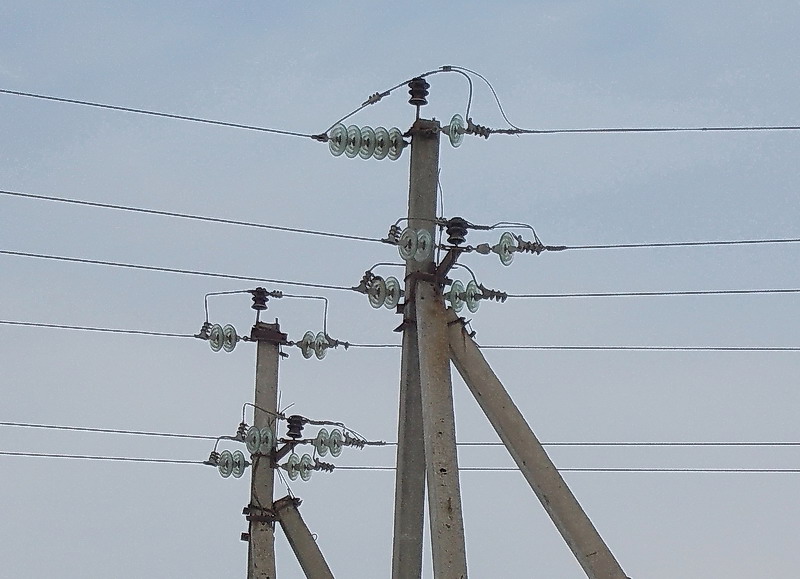
Power transmission line supports, except for centrifuged and virirovannye racks, may consist of the following structural elements:
- struts;
- prefixes;
- base-anchor plates;
- crossbars;
- anchors for fixing braces;
- lower concrete cover (thrust bearing);
- a wide range of metal structures, including cable racks, extension traverses, extension arms, clamps, braces, internal connections, attachment points.
The installation of reinforced concrete supports into the ground is carried out by installing the structure in a pre-drilled cylindrical pit, followed by backfilling the sand-gravel mixture into the formed sinuses.
In order to ensure the necessary strength of the installation of the structure on soft soils, the underground part of the overhead line supports is strengthened by means of crossbars grasped by half-clamps. Clamps or through bolts are used to fasten hinged metal structures.
Main characteristics
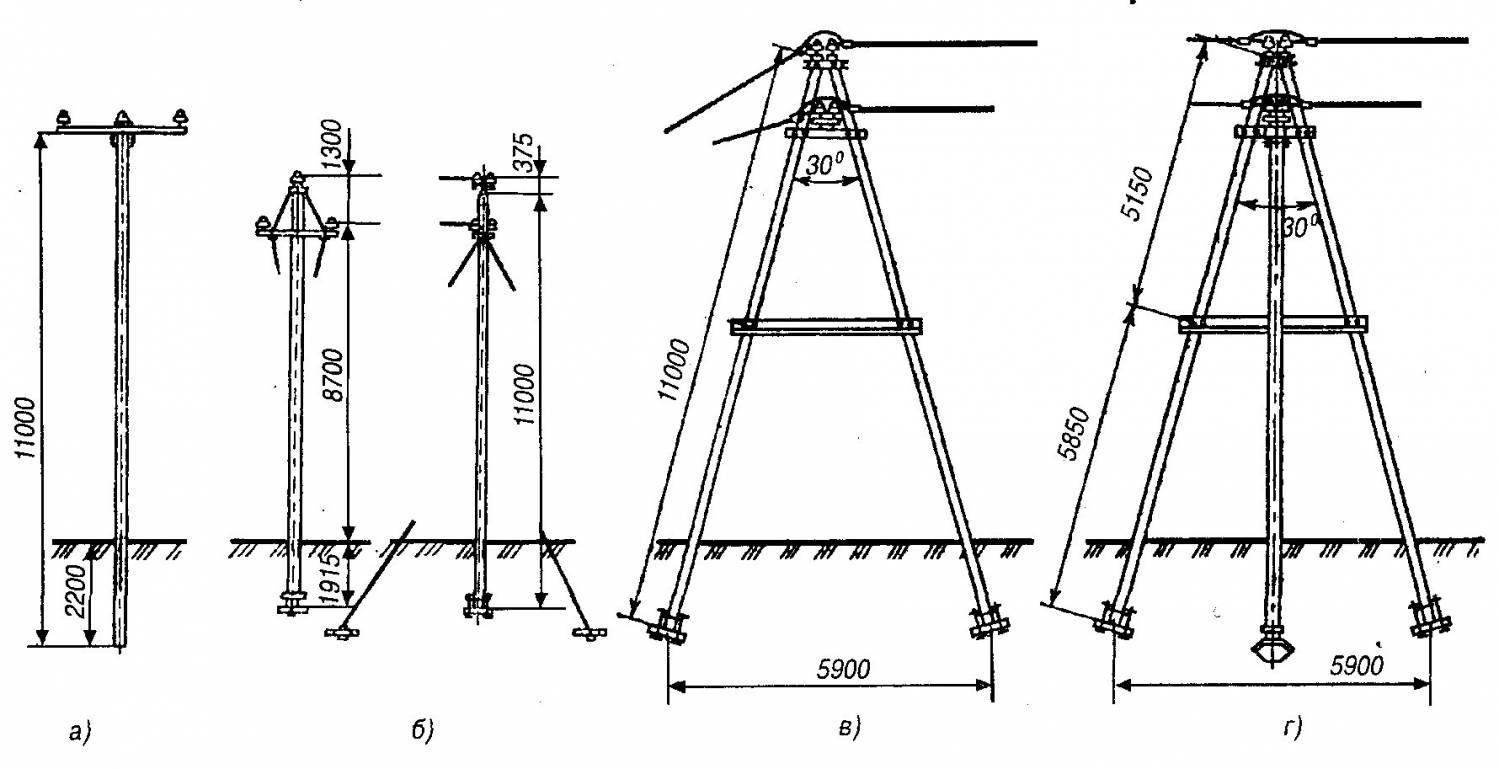
Reinforced concrete supports are made using high-quality concrete reinforced with wire rod and reinforcing bars.
Among the main advantages of these structures, the following qualities should be noted:
- affordable price, in comparison with all-metal counterparts;
- resistance to corrosion;
- resistance to long-term exposure to chemicals;
- resistance to excessive moisture;
- resistance to temperature fluctuations.
Important: The main disadvantage of supports made using reinforced concrete is the low strength in accordance with the mass of the structure as a whole.
In addition, the high weight and dimensions of such products turn into significant expenses during transportation.
Main varieties
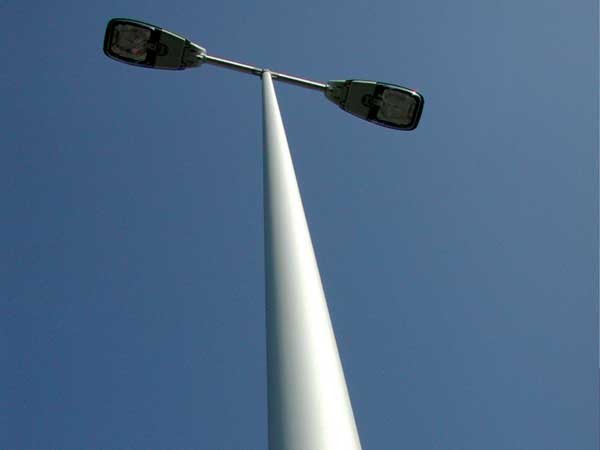
In addition to the fact that reinforced concrete lighting poles are widely used, poles for power lines are used.
Such structures are divided into the following categories:
- Supports of intermediate type- are used in the arrangement of straight sections of the route of overhead lines.
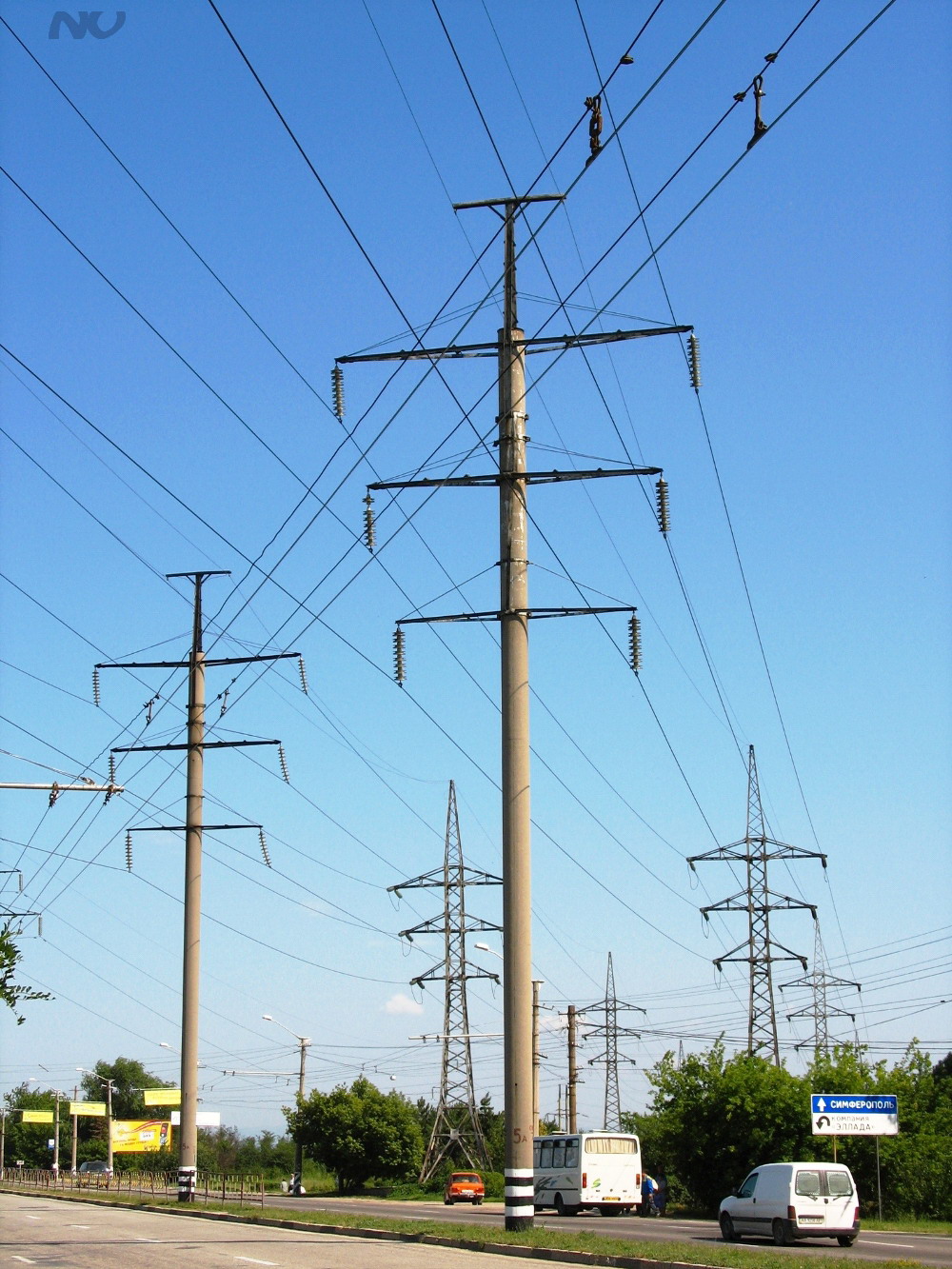
In the photo - intermediate type pillars
Such structures are not designed for the load directed along the power line and are used exclusively for the installation of wires and fixing cables. Today, about 80% of all power lines are mounted on.
- Anchor type supports are used in the arrangement of straight sections of the route of overhead lines to ensure the transition through natural barriers or engineering structures. Also, these poles are widely used in those sections of the route where it is necessary to change the number, brand and cross-section of wires.
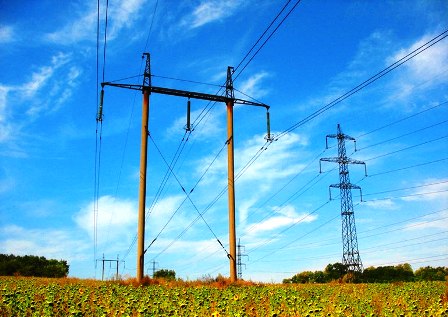
In the photo - anchor poles
- Corner supports- are installed in those sections where the route changes its direction. Poles of this type account for the resulting load of the gravity of the wires from the inter-support adjacent spans.
If the route is characterized by a small angle of rotation (no more than 30 °), then the loads on the supports are small, and therefore angular intermediate supports can be used. For large angles above 30°, anchor angle supports with a stronger structure and anchoring of wires are used.
- end support- This is a type of anchor poles.
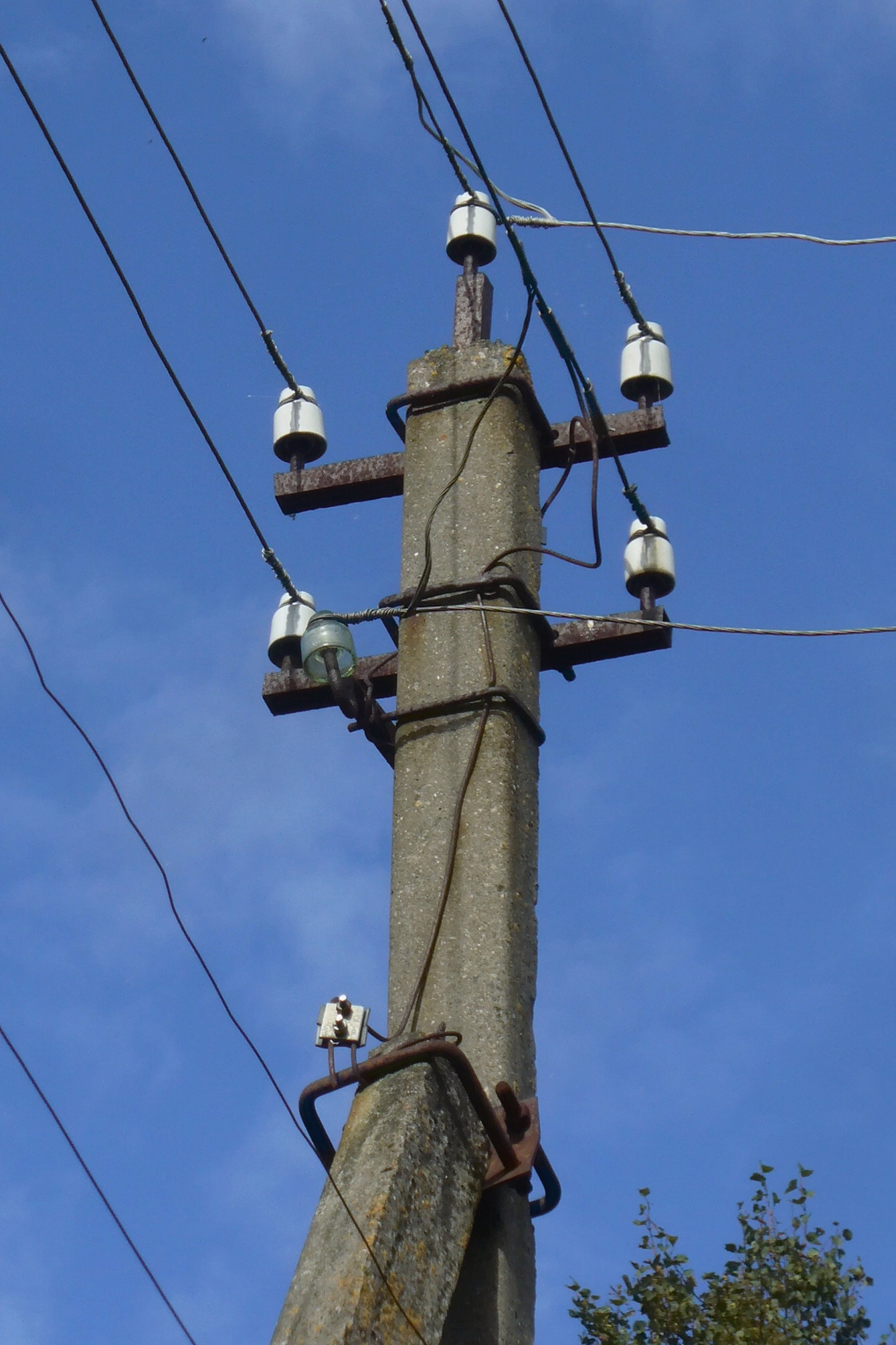
Such structures are located mainly at the beginning and end of power lines. Structures of this type are designed for unilateral loads.
- Supports for special purposes used for specific tasks.
Design features
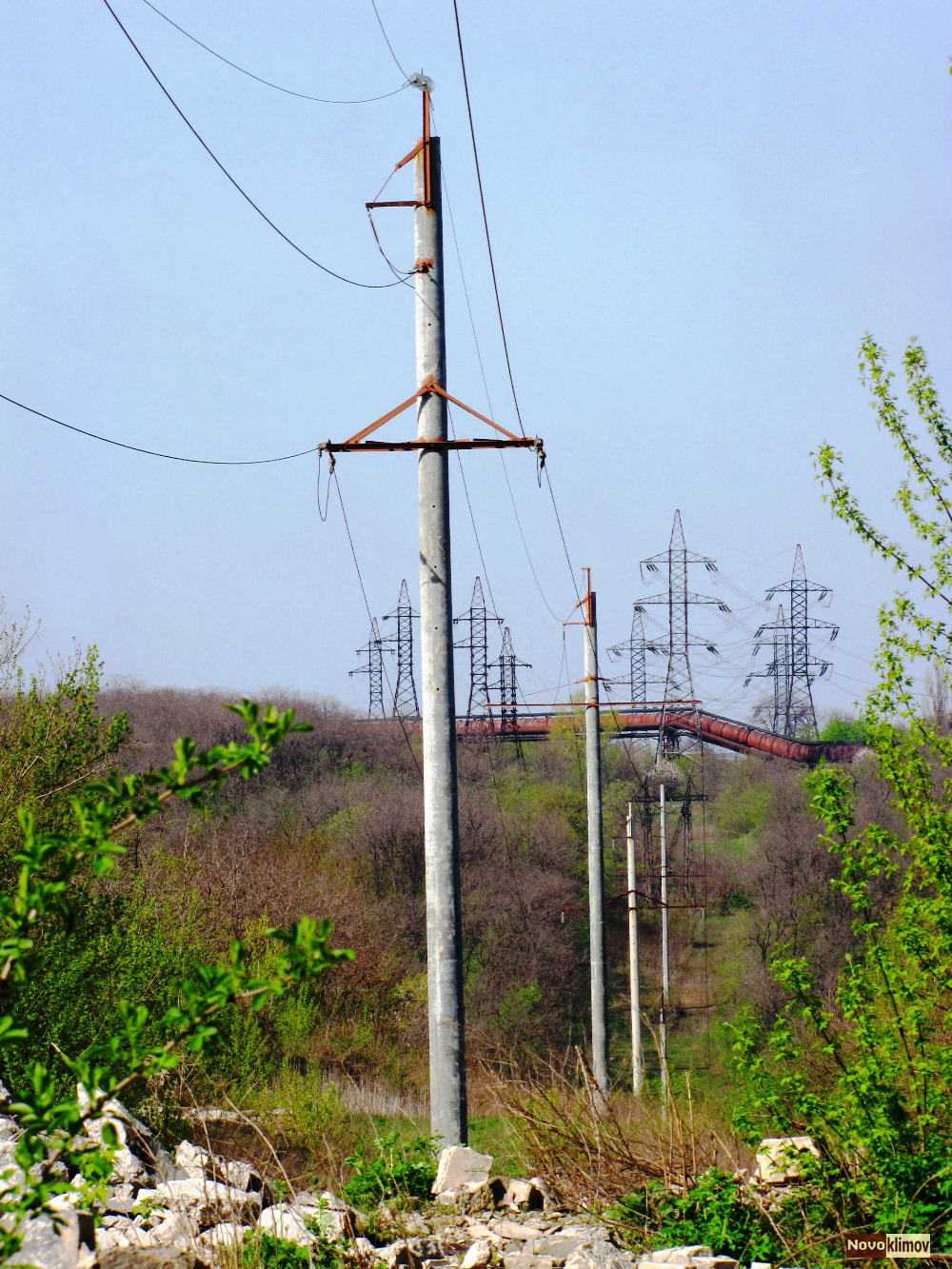
In accordance with the design features, reinforced concrete supports of overhead lines are divided into the following categories:
- portal with braces;
- portal with internal connections without braces;
- single and multi-rack with braces;
- single and multi-rack without braces.
Manufacturing technology of overhead line supports from metal-reinforced concrete
So, after we have decided on the technical and operational characteristics of reinforced concrete supports intended for laying overhead lines, we will consider the technology of their manufacture using the example of modification SV 95.
Production instructions step by step. The first - the preparatory stage provides for the following work.
Preparation of the working mixture:
- Preparation of Portland cement, inert materials, chemical. additives and water in accordance with the proportions given in project documentation;
- Dosing of components and loading into a concrete mixer;
- Bringing the mixture to a homogeneous consistency and unloading into the concrete paver.
Preparation of reinforcing metal structures:
- Cutting reinforcing bars of the required class into segments of the desired size;
- Preparation of anchor heads;
- Formation of contour spirals;
- Formation of loops and preparation of the ground loop rod.
Form preparation:
- Cleaning the internal volume of the form;
- Lubrication of the internal volume with agents that prevent concrete sticking;
- Distribution of spirals;
- Carrying out isothermal heating of rods;
- Distribution of heated rods on pre-laid stops;
- Threading a spiral between the rods, followed by fastening to the rods at three points;
- Distribution of inserts along the ends of the form;
- Installation of tubes and technological loops with their obligatory fixation to the inner surfaces of the formwork.
The second stage is production. At this stage, the working mixture is poured and the finished product is formed.
The following works are carried out in the process:
- The conveyor of the concrete paver is set to the working position and the pre-prepared form is filled with mortar. Filling the form with concrete is carried out by moving the stacker along.
- By means of a deep vibrator, the mixture is compacted in order to prevent the formation of voids.
- Do-it-yourself workers, using a rule or a trowel, level the surface of the laid material in the form.
At the third stage, the product is subjected to isothermal treatment.
This is done as follows:
- A heat-insulating material is laid on top of the filled formwork.
- The system for heating the internal volume of the formwork is switched on. The system automatically controls the parameters of temperature, time, etc. Therefore, the influence of the human factor on the quality of the product is minimal.
- Covering material is removed.
At the final stage, the mold is dismantled, the reinforcement is trimmed, the quality is checked and the finished product is shipped to the warehouse.
Conclusion
So we have considered general information about how the production of reinforced concrete supports is carried out. We also found out what these structures are, what are their technical and operational characteristics.
Are there any questions that need clarification? More useful information you can find by watching the video in this article.





